
D&D Gets Post Apocalyptic with Hellscapes
There’s a huge variety of tabletop roleplaying games out there on the market, providing infinite variety in settings, themes and mechanics. Everything from primitive worlds to vast universes, quickstart guides to 500-page rulebooks, and low-brow humor to high-brow drama. But if you’re like me, and can simply never get enough Dungeons & Dragons, testing the limits of fifth edition D&D keeps you plenty satisfied with your RPG obsession. In the weekly live stream game I run on the Nerdarchy YouTube channel, we cobbled together our own gonzo Spelljammer setting using material from Hyperlanes. And now with Hellscapes, the follow-up project from the same creators, a new avenue is open to explore – post apocalyptic adventures using the 5E engine!

The artwork inside the Hellscapes book is fantastic and evocative, giving you a ton of fuel to imagine harsh landscapes and the kinds of exciting adventures to take place within them.
Hellscapes nails post apocalyptic survival
Adventuring in a post apocalyptic setting is no walk in the park. Unless that park is irradiated, filled with mutants, patrolled by the robot overlords or teeming with zombies or feral marauders. The tapestry for post apocalyptic adventures is quite broad in terms of both time and the triggering event. Hellscapes covers the gamut of both in a concise 181-page book with everything you need to bring this sort of setting to desperate life.
The focus of what’s important to a post apocalyptic RPG campaign is clear right from the get-go. The first chapter dives right into it with the most crucial aspect of this sort of adventure – survival. Larger goals like curing the zombie plague, destroying the machine army or toppling the radioactive mutant army are not to be ignored, certainly. But before any of those sorts of heroics take place, an adventurer’s gotta eat!
Most of the first chapter guides you through designing your own personal apocalypse to define your Hellscapes setting. Between the lines, the system assumes your post apocalyptic campaign takes place on our own Earth, but there’s nothing wrong with creating your own original planet either. You could even borrow from Hyperlanes and create unique new species to populate the world.
Starting from a broad perspective, you’re prompted to envision what the world is like following whatever terrible event changed everything. Did global temperatures plummet, plunging the world into a frozen wasteland? Or did the climate reach unbearably scorching heat levels? Was the planet devastated by nuclear war or disease? Taken over by machines, invaders from space or horrors beyond comprehension? Did a zombie plague spread across the globe, leaving the living in constant danger from the undead?
 With your big picture figured out, Hellscapes adds a very cool mechanic to the D&D ruleset – Environmental Hazards. These dangerous conditions are what put the “hell” in Hellscapes. Building on the Challenge Rating system, Environmental Hazards are sort of a combination combat/exploration encounter a Game Master can use to illustrate and intensify the threat of simply existing in these worlds.
With your big picture figured out, Hellscapes adds a very cool mechanic to the D&D ruleset – Environmental Hazards. These dangerous conditions are what put the “hell” in Hellscapes. Building on the Challenge Rating system, Environmental Hazards are sort of a combination combat/exploration encounter a Game Master can use to illustrate and intensify the threat of simply existing in these worlds.
Each Environmental Hazard is assigned a CR, which attaches several XP value, periodic damage and how many factors are included with the hazard, and last 1d4 hours before moving or dissipating. For example, a CR 6 Environmental Hazard has one factor like Sickening that carries a chance to poison characters caught in it, and deals 1d6 damage every 10 minutes the hazard is active. This could be something like an irradiated zone the characters must travel through to reach a generator they need to bring back to a settlement in dire need of energy.
On the higher end of the scale, a CR 24 Environmental Hazard has four factors and deals 2d12 damage every 10 minutes. Imagine something like a spore cloud that eats away your gear, attracts monsters, halves your speed and deals another 2d12 of a second damage type!
Other elements of survival in Hellscapes include scouring the wastelands, crafting, repairing, discovering pocket communities and more basic survival. The guidelines for things like foraging, scavenging, searching and salvaging are given a good overview both in terms of storytelling and mechanical bits. And Hellscapes adds two new unique conditions to the 5E engine, except unlike negative ones these two are positive…sort of.
Since Hellscapes supposes the character will have their hands full simply trying to live through each day, the well-fed and well-rested conditions give characters a bonus when they are actually able to eat a decent meal or sleep soundly without worrying about radioactive mutants attacking.
A great thing to note at this point is, like Hyperlanes, you could absolutely drop any of this material into a more traditional D&D campaign. Environmental Hazards are flexible enough to use for something like a storm of magical energy, coterminal planar forces, a zone of evil power suffusing a crypt or whatever you can imagine. Likewise, the sections on scouring the lands could make wilderness travel through untamed wilds a lot more involved for the characters.
It’s also worth pointing out Hellscapes fiddles with 5E damage types a bit; fire is called heat, thunder is called concussion and so on, and a new damage type – ballistic – is added to represent firearms. The book explains this was done in part to account for things like a Marauders damage reduction.
The part D&D players love – character options
Origins
Like Hyperlanes, Hellscapes doesn’t necessarily give you new races or species to play, but a new system to create your own. There are sample species, but in broader terms called origins. Bestial, mutant and tribal origins each have enough wiggle room to design a lot of different kinds of characters. Since the basic assumption is a world with a single dominant intelligent species, these origins take characters down different avenues more akin to genetic quirks or defects than distinct races like elves, dwarves and so forth.
The bestial origins are like Dr. Moreau-style characters. Whether caused by strange radiation, experimentation or some other force probably related to whatever caused the Hellscapes to come about, bestials are animal-human hybrids. The all share certain traits like affinity with the base animal and a place in the ecosystem, and quite a few subraces are included like bat, pig, mole, and shark bestials to name some of the more unusual ones.
The mutant origin is for characters whose humanity is significantly altered by the conditions in the world. Something like the Reapers from Firefly/Serenity, creatures roaming the wastelands of the Fallout world, or the Mutant Street Beatniks who gave Madman and The Atomics a hard time in Mike Allred’s comic book universe are good examples of this origin. These freakish creatures can choose three mutations like bulletproof, pyrokinetic, or a weird sense to detect things like gasoline or water.
Finally, there is the tribal origin to represent the small pockets of humanity who survive in Hellscapes. A really innovative system for creating unique cultures, called Ways, makes these normal humans distinct from each other depending on how their isolated group developed and manages in their dangerous world. Tribal characters choose three Ways, which give ability score bonuses and special traits. (An optional rule allows tribal characters to choose four Ways, if everyone in the party is from the same tribal culture.) Examples of Ways are We Endure, which gives a Constitution bonus, resistance to a damage type and advantage against a particular Environmental Hazard; and We Talk it Out, which gives a Charisma bonus, extra languages and Charisma skills and a rumor-gathering ability.
Like the survival elements, any of these origins could be transported into a D&D campaign to add interesting new cultures with both mechanical and roleplaying elements baked right in.
Classes
Taking the chassis from several 5E character classes and adapting them to the harsh world of Hellscapes rseults in six possibilities for characters to choose from. Marauders are based on the barbarian class, nomads on the ranger, outcasts on the rogue, scavengers on the sorcerer, throwbacks on the paladin and warriors on the fighter.
All of the classes receive gambit slots, the Hellscapes and Hyperlanes equivalent of spells. These give characters fun new abilities like special combat maneuvers, vehicle piloting tricks, damage recovery and a whole lot more. Each class also has several subclasses, and naturally all of the choices are designed around survivability in an inhospitable world.
If you are familiar with playing any of the standard D&D classes, it doesn’t require a big stretch to dive right in with any of the classes in Hellscapes, but they add enough fun new stuff too. A marauder uses rage just like a barbarian to deliver brutal melee attacks, but a Myth archetype marauder can also take advantage of the legendary characters they base their life on, like Mad Max or Joan of Arc, to gain benefits whenever they enter a settlement. Likewise, a scavenger uses a pool of special points to manipulate their gambits, but they might also have a fetishized item like a guitar or hazmat suit they invest power into and draw strength from.
The remainder of character options are things like backgrounds and feats familiar to 5E players, but with tailor made for the Hellscapes settings. Backgrounds provide additional proficiencies, languages, equipment and features along with suggested characteristics. Feats, of course, enhance characters in powerful ways and grant other perks like a loyal pet (Mad Max’s dog comes to mind), cybernetic implants and even one called parkour (pretty sure most of the Critical Role characters have used this one quite a few times!).
Later in the book, gambits are listed too. Organized into schools like spells, these are Civilization, Daredevil, Foresight, Instinct, Old Ways, Patching, Scrounge, Slaying and Wilderness. Each school has their own tricks (cantrips) and gambits. The Old Ways school is my favorite, giving a character knowledge of the time before the apocalypse. Gambits like button mash, remember the ’90s and binge watch allow a character to summon knowledge of the past or interact with objects leftover from long ago.
Post apocalyptic set dressing
The remainder of the Hellscapes book covers everything you need to adventure in a hellish world. Gear for characters like weapons, armor and survival tools, vehicles, raw materials, and personalized items are provided with interesting extra details like gear condition. Irradiated or infectious items, damaged or ruined gear and even conspicuous equipment are explained, adding to the bleak nature of the world. Your characters might finally make their way to the cache of supplies they heard about, only to find most of them ruined or potentially unusable due to the effects of the environment.

The materials is a particularly nice inclusion. Listed on a random chart, these materials are treated like treasure, but of course a GM can select whatever ones they wish to insert. It really illustrates the desperate situations a Hellscapes party finds itself in when treasure can be a battery that powers a device or vehicle for 10 hours.
In lieu of magic items, personalized items are those things that not only survive intact but perform better than normal, making them equally valuable to magic items and artifacts in a traditional D&D game. Unlike magic items though, personalized items can be customized and improved upon by characters through a modification system. Players who love the idea of crafting and making their own items will dig this stuff. You can make your armor sleek, adding to your move speed, attach a grapple gun to your weapon and a whole lot more.
For the Mad Max fans out there, an entire chapter is devoted to vehicles. The Hyperlanes-style system is used here for quick creation of unique vehicles with their own quirks like leaky, shaky, or stolen. There’s also guidelines for covering vehicle travel like collisions, jumping, and hanging on to the outside while a vehicle is moving, plus several sample vehicles like pickup trucks and helicopters.
Lastly, Hellscapes finishes up with a chapter on a variety of creatures that might lurk out in the wastelands or otherwise threaten the characters. Like Hyperlanes, Hellscapes uses a template system to create monsters. A chart shows all the CRs and gives things like Armor Class, attack roll bonuses and damage for each one, plus a GM can add traits from a pretty extensive list of additional ones that modify the CR. Things like Cooperative, which gives a creature half cover when within 5 ft. of an ally, or Deadly that provides an additional attack, can be easily added to a creature (again, even a standard D&D one) to punch it up a bit.
Because the possibilities for a Hellscapes setting are so wide, the book gives a good selection of different sorts of monsters. There’s aliens (beware the City Devourer), mutants, robots, raiders and zombies, and each category has at least a half-dozen samples of each. There’s ten different sorts of zombies! Fast ones, slow ones, smart ones, toxic ones and more.
Ready to run a post apocalyptic D&D campaign?
If Hellscapes already has your imagination coming up with bleak worlds, desperate survivors and harsh environments to explore, you can pick up a PDF copy from DriveThruRPG and use Nerdarchy’s exclusive coupon code DTRPG-Nerdarchy for a one-time 10 percent discount on digital orders $10 or more. Like the creators’ previous Hyperlanes book, any of the material in Hellscapes can be dropped into D&D games, making both these books a great value add to your collection of game content. Perhaps your fantasy setting is like the world of Shannara, and the sword-and-sorcery wielding adventurers stumble upon an ancient science lab buried deep in the earth, with leftover pieces of technology…and a devastating threat risking release into the world.
Or maybe you’re like me, and you’ll use Hellscapes the same way I use Hyperlanes – to recreate your own version of a classic D&D setting like Spelljammer. There’s a certain setting widely loved and considered one of the best of all times, taking place on a post apocalyptic world devastated by magical catastrophe. The struggle for basic survival, resource scavenging and harsh environments in Hellscapes mashed together with the magic of D&D could make for a wonderful version of Dark Sun, am I right?
For more ideas about post apocalyptic D&D adventure, there’s another Nerdarchy classic throwback video too, where the crew discusses ideas for running these sorts of campaigns. What makes them special and how you can inject and maintain the kind of flavor that makes these kinds of campaigns unique.
Like this?
Did you enjoy this post? Nerdarchy’s awesome volunteer staff of writers and editors do their best to create engaging, useful and fun content to share. If you like what you find here on our site, consider patronizing us in a good way through Patreon.
On top of reaching our goal of paying our writers, pledging gets you exclusive monthly content for your D&D game, opportunities to game with Nerdarchy, access to patron-only channels on our Discord and more
With your generous support we’ll continue to create quality content between our YouTube channel and blog, invest in equipment to increase recording quality, and eventually create original publications and products to enhance your tabletop role-playing and gaming experience.
Thank you for your consideration and as always, until next time stay nerdy!
[amazon_link asins=’B00XOX9QCS,0978258592,1534304975′ template=’ProductCarousel’ store=’nerdarchy-20′ marketplace=’US’ link_id=’1fc202e7-46c5-11e8-ac12-3d99497e911b’]




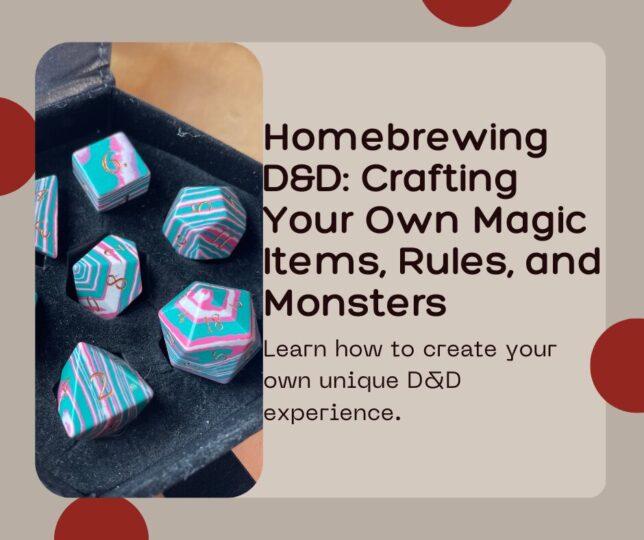
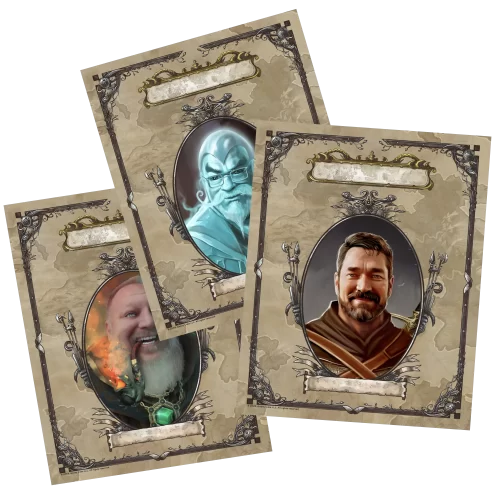
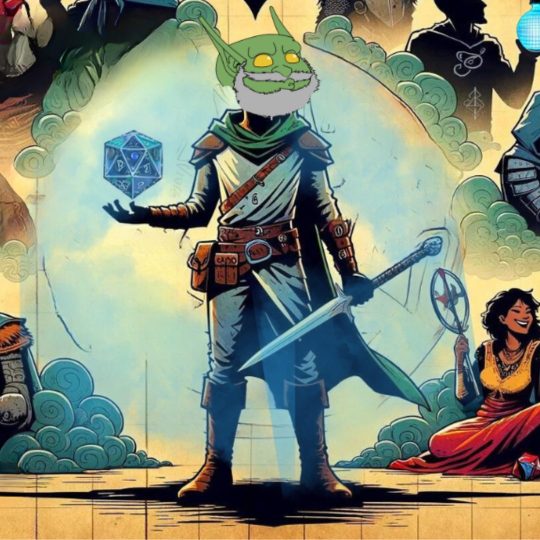
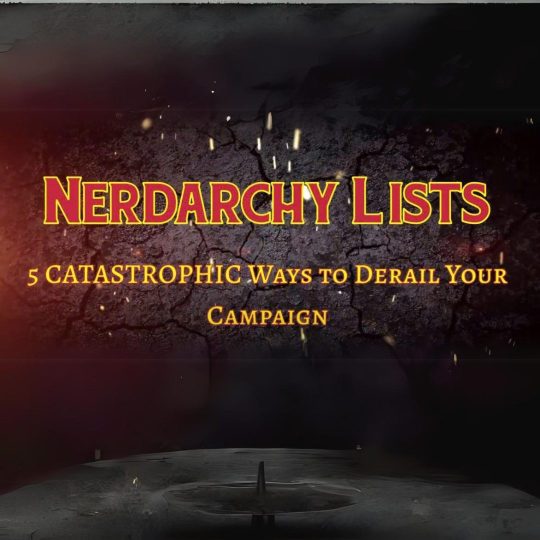
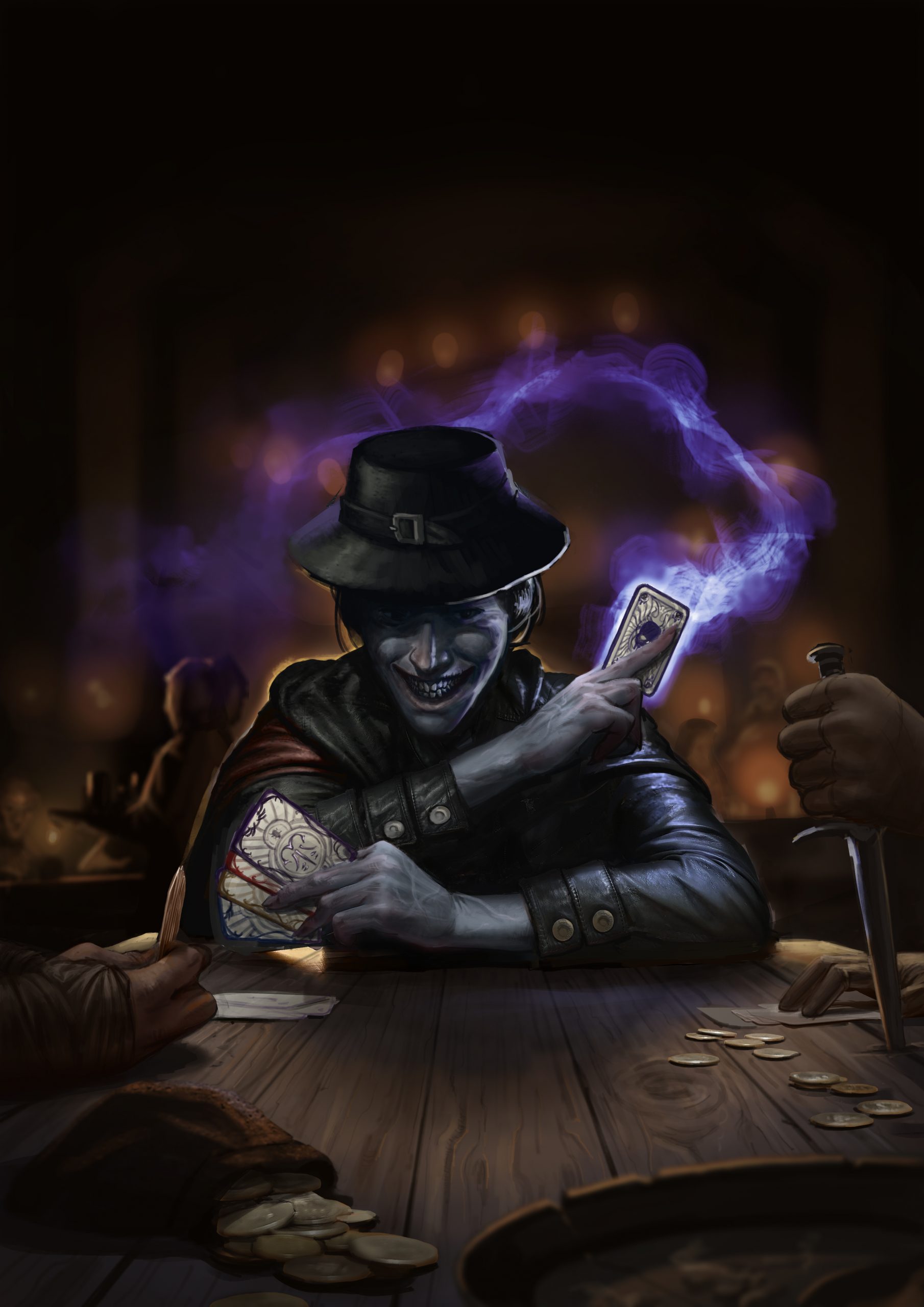
1 Comment